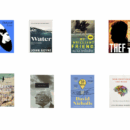How hard do you make it for your customers to deal with you?

I wrote here recently about my savvy neighbourhood shop guy, the one who’s had a turbocharged pandemic. He’s gone from being just the milk ’n’ bread kiosk to a shop supplying a wide range of groceries to the hood. How did he do that? Just by making the lives of his customers easier. You call in or WhatsApp your order; 30 minutes later a bicycle brings it to your doorstep.
Many of you asked: how do I think about this for a large organization, though? Is there a framework that helps me think about customer convenience systematically, so that my business can achieve it consistently?
First, please understand how powerful this force is. Research repeatedly shows that customers do not want to expend any unnecessary effort in dealing with businesses. The easier you make it for them to buy from you, the more loyal they become—and the more they are likely to spend on you.
So how do you address customer effort and friction systematically? The folks at the UK’s Henley Business School have thought of an easy-to-use framework for you. To answer the question, “how easy are we to do business with?” they ask you to focus on customer ease—but in two ways. First, there is the objective time and energy customers spend on any encounter with your brand or organization; but also, there is the intangible perception customers hold about how easy you are to deal with.
Customers interact with organizations in many ways: they try to get information from them; they buy their stuff; they use what they buy; and they deal with issues that arise after buying. If they feel that they have to expend too much energy in some or all of those encounters, their perception of value dissipates. You cost them too much in extra effort to be worth their while.
Henley’s Centre for Customer Management has found four types of energy customers expend in dealing with you, using the acronym CEPT (pronounced “kept” for ease of recall). First, there’s cognitive energy—the mental effort of figuring out your offerings or making decisions. Next, think about emotional energy, which is the anxiety or stress or frustration they might experience in encounters with your organization. Thirdly, physical energy: travelling to get to you, or carrying heavy loads. And lastly, time energy: how long it takes to wait, or transact, or consume.
So, if your company befuddles customers with complicated information; if it annoys or vexes them; if it makes them come long distances and expend much time in dealing with you; then guess what? You score very poorly on customer ease. And this will cost you.
Henley’s research suggests that rather than making too much effort “delighting” or “wowing” your customers, you should first just make sure you don’t overburden or annoy them! Use CEPT when mapping the journeys customers make in dealing with you, to see where you have unnecessary pain points. This applies equally to those businesses who sell to other businesses—B2B companies. You have to first and foremost be easy to deal with, across all departments.
Most of your customers, whatever you sell, are busy, stressed-out people. They face many frictions and challenges in their daily lives. They will therefore react very negatively to any business that makes them waste even more mental, emotional, physical, or time energy. On the other hand, businesses that are easy to deal with are favoured greatly, because they make life a little easier. Those services and products that provide great customer ease become habits—they are purchased as a matter of course, without too much thought. They just work.
Some of the greatest thinkers around customer experience have known this fact, instinctively. Apple’s Steve Jobs made simplicity and ease of use core features of all his offerings—as important as the “wow” side of surprisingly great functionality. Jeff Bezos knew that the easier he made it for his customers, the more likely they were to use Amazon as a default.
My neighbourhood shop guy knows it too. Give customers fewer things to think about. Predict their needs by studying their lives. Make it easy by taking the goods to them, quickly. Oh, and don’t annoy them. Smile and be friendly, a lot. They will like all of that. Ka-ching.
So what stops you, big-firm bosses? Why do you find every reason to not make your organizations easier to deal with—it costs too much, I don’t have the right people, my customers are too annoying, it’s the regulator’s fault, etc? Why don’t you sit down tomorrow with your team, map out some typical customer journeys and use the CEPT framework to find the pain points?
I guarantee you will find some big, glaring, unnecessary ways in which you are making the customer do too much work.
(Sunday Nation, 6 February 2022)

Buy Sunny Bindra's new book
The X in CX
here »
Popular Posts
- My books of the yearDecember 14, 2025
- Here’s why you should become foolishNovember 30, 2025
- Confessions of an explaining personDecember 7, 2025
- How to listen, really listenNovember 16, 2025
- Is AI hiring your company into oblivion?November 23, 2025















